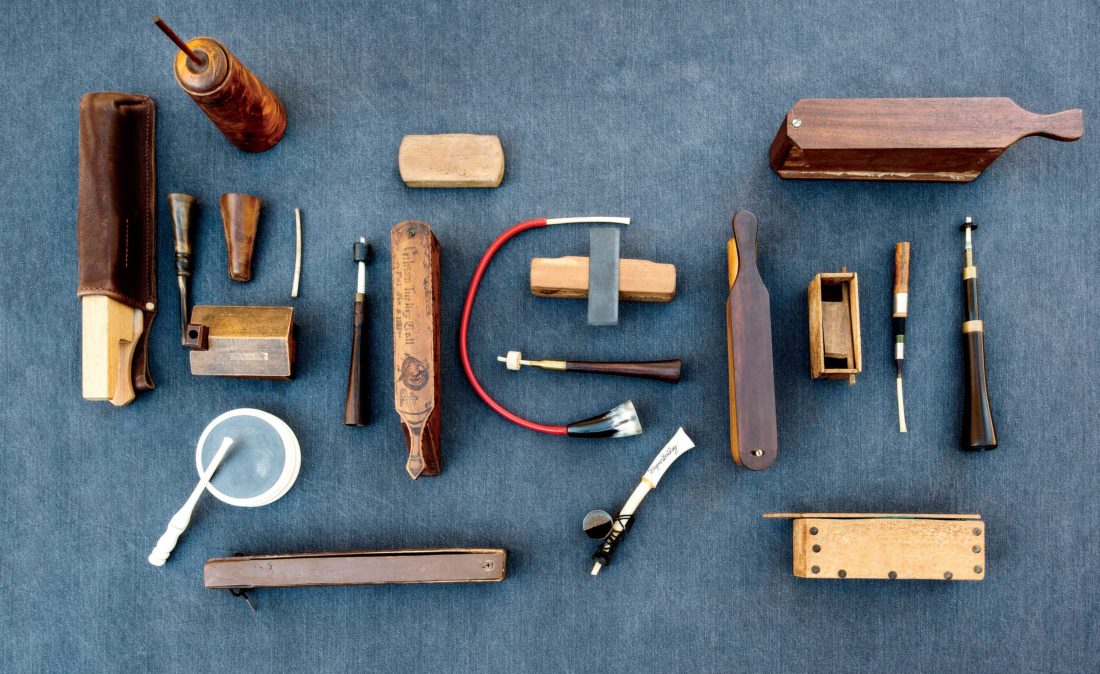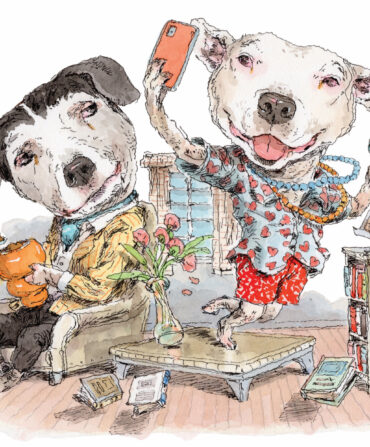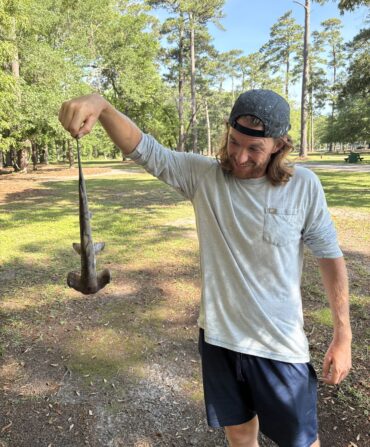One morning in March 2016, Danny Ellis, a Charlotte real estate developer, was headed into a business meeting when he received a text from a friend: “Danny, did you just buy the Jordan yelper that showed up on eBay?” What might seem like gibberish to most people stopped Ellis in his tracks. No, he hadn’t bought it. “But I immediately thought, ‘This could be the one,’” he says. “I was so excited.”
Ellis, who is sixty-six, collects turkey calls. And in that small but obsessive world, there has long been one call considered the Holy Grail: an eight-inch wing-bone-and-cane yelper call (which resembles a small trumpet) made in 1898 by the famous Louisiana turkey hunter and writer Charles L. Jordan. Though there are countless replicas of the call, no one knew for sure if an original even existed. After doing some quick research, Ellis believed the one that had shown up on eBay might be it. The only problem: The listing suddenly disappeared.
It turned out that a man from Rockwall, Texas, had purchased the call at an antique firearms sale. When he’d listed it on eBay, he had been deluged with bids and messages. That made him wary, so he took the listing down.
Ellis managed to get in touch with the man, and after verifying the call’s provenance (which included the original presentation inscription from Jordan), he bought the piece for $50,000—a bargain in Ellis’s eyes. “It has a six-figure value,” he says.
The addition of the Jordan yelper had a transformative effect on Ellis’s assemblage of roughly six hundred calls. “Danny doesn’t have the biggest collection,” says Chris McDonald, a turkey call historian and appraiser from Nashville. “But it’s probably the most important one in existence.”
While turkey calls may not yet have the collecting cachet of, say, antique duck decoys or firearms, they are becoming more popular—both on eBay and in small auctions—thanks in part to the resurgence of turkey populations around the country. Historians believe the first calls were crafted some eight thousand years ago by Native Americans, and since then they have evolved into different styles—box, friction, push-pin, tube, yelper, diaphragm—designed to mimic the thirty or so vocalizations of a wild turkey.
For Ellis, the call that started it all came from the magazine Turkey Country (a publication of the National Wild Turkey Federation). His wife saw an ad for a call made by Neil Cost, a well-known contemporary maker from Greenwood, South Carolina, and bought it for him. An obsession was born.

Photo: Lissa Gotwals
A Gibson box call emblazoned with sporting art.
Since then, Ellis has obtained some of the most important turkey calls ever made. In addition to the Jordan, he acquired a scratch box crafted by Henry Davis—the author of the 1949 book The American Wild Turkey—that’s the only one in existence with any documented provenance. He also has vintage calls made by Tennessee’s Turpin brothers (Tom and Inman), including a very early Tom Turpin yelper that came with the original September 6, 1940, newspaper wrapping Turpin used when he shipped it to a client.
Ellis’s oldest call is probably a turkey wing bone that came from a Native American artifact trove found in a Tennessee cave. “It still has the teeth marks on it,” he says. That call has no known provenance, and thus no real market value. But that’s fine with Ellis. “Some of the calls that truly interest me are not necessarily the most significant ones,” he says. Among those are two from Texas: One looks like a tiny butter churn, and the other is in the form of a mini log cabin; its chimney holds a piece of chalk used to manipulate the sound of the call.

Photo: Lissa Gotwals
Twenty-one of the most valued turkey calls in Danny Ellis’s collection.
Ellis stores his collection at his Charlotte home. “I actually built my house around the den where I keep the calls,” he says. The pieces are laid out in lit cabinets and protected by a high-tech security system.
Though he takes precautions at home, Ellis does occasionally use some of the valuable pieces in the field. He recently loaned out the Jordan yelper to a friend from Atlanta—the turkey-call-world equivalent of using a Picasso as a tea table. “My friend was so nervous,” he says. “I told him, ‘Buddy, it’s a damn turkey call. Go get a bird with it.’”
For Ellis, the monetary value of the calls has never been the point. “I love history,” he says. “I love that I can sit in
the woods on a beautiful spring morning, watching the
sun come up and interacting with an animal, and just imagine the person who made this call a hundred years ago being in the same situation as me.”








